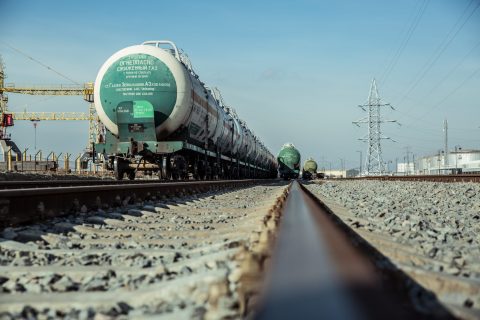Kaliningrad sees a 37.2% drop in rail volumes for the first half of 2023

Kaliningrad Railway (KZD), an RZD subsidiary, experienced a 37.2 per cent drop in freight volumes loading for the first half of 2023. Between January-June, the company loaded 955.700 tonnes of cargo on its trains. The company had exceeded 1.5 million tonnes for the same period last year. The development is no surprise considering that rail freight traffic to and from Kaliningrad has been significantly restricted since the war in Ukraine started.
The fact that restrictions apply on rail transit to and from Kaliningrad, especially from the Lithuanian side, has already a heavy impact. It must be noted that Lithuania was the main transit route for traffic between Russia and its exclave. However, at the beginning of 2023, LTG Cargo announced that it would reduce Kaliningrad transit volumes by 67.5 per cent this year. The decrease would amount to 5.4 million tonnes of cargo since, from 8 million tonnes in 2022, LTG would facilitate the transit of 2.6 million tonnes of cargo.
From these 2.6 million tonnes, roughly 2.2 million tonnes would be Kaliningrad-bound from Russia, and 420.000 would run in the opposite direction. Prominent in the transit volumes would be coal and steel products.
Hitting rock bottom
Apart from mainland Russia-Kaliningrad traffic, 2023 was also set to disrupt Eurasian traffic bound for Kaliningrad. The exclave’s Eurasian volumes had already dropped significantly in 2022. In particular, according to the index1520 data, Kaliningrad served Eurasian flows with two terminals – Mamonovo and Kaliningrad-Sortirovochniy.
The first saw 6,150 tonnes of cargo from Altynkol and 1,968 tonnes from Dostyk in 2022. The drop was 89,4 per cent for Altynkol-originating volumes and 35,7 per cent for Dostyk-originating volumes. The latter saw roughly 43,000 tonnes coming from Altynkol and 7,320 from Dostyk. The drop for the Kaliningrad-Sortirovochniy terminal was more significant since, compared to 2021, it received 72,44 per cent fewer volumes from Altynkol and 86,98 per cent reduced volumes from Dostyk.
For 2023, the situation might have an even more pessimistic outlook. Of course, figures from 2022 warned for an even slower 2023. However, at the moment, no data are available for Kaliningrad in the index1520 dataset, and most of the traffic arriving in Europe via Russia seems to be using the Brest/Malaszewicze border crossing. Consequently, Kaliningrad’s Eurasian volumes seem to be hitting rock bottom. At the same time, they are accompanied by considerably reduced volumes to and from Russia via rail–thus explaining the drop in KZD’s loading figures.
Also read:




